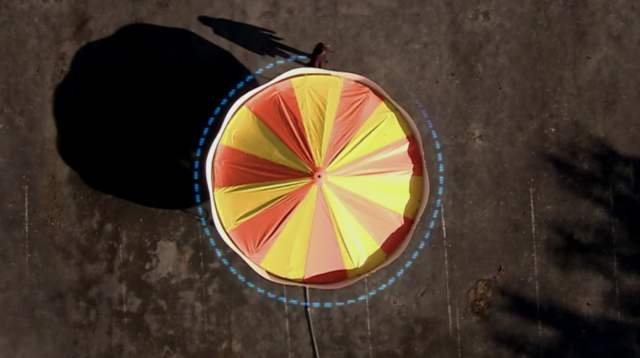“How do you keep an orbiting satellite hovering above a single point over a rotating planet? Well, it seems simple: you just slow your satellite down until it’s above the point you want. But unfortunately, it’s a lot harder than it sounds…”
In this BBC Earth Lab clip, British space scientist and science educator Dr Maggie Aderin-Pocock explains that when satellites slow down in this way, they’re no longer going fast enough to stay in orbit. They “start spiraling down towards the Earth and eventually burn up in the atmosphere.”
Scientists had to calculate that “magical point” where satellites could travel around Earth as fast as Earth spins while not being pulled back down. That point is just about 35,786 kilometers (22,236 miles) out, where satellites only feel about 3% of the gravity felt on Earth’s surface.
Satellites in geostationary orbit or geosynchronous equatorial orbit (GEO) appear motionless in the sky when seen from Earth. From PhysicsClassroom.com:
“A satellite is any object that is orbiting the earth, sun or other massive body. Satellites can be categorized as natural satellites or man-made satellites. The moon, the planets and comets are examples of natural satellites. Accompanying the orbit of natural satellites are a host of satellites launched from earth for purposes of communication, scientific research, weather forecasting, intelligence, etc. Whether a moon, a planet, or some man-made satellite, every satellite’s motion is governed by the same physics principles and described by the same mathematical equations.
“The fundamental principle to be understood concerning satellites is that a satellite is a projectile. That is to say, a satellite is an object upon which the only force is gravity. Once launched into orbit, the only force governing the motion of a satellite is the force of gravity… if launched with sufficient speed, the projectile would fall towards the earth at the same rate that the earth curves.”
“This would cause the projectile to stay the same height above the earth and to orbit in a circular path… At every point along its trajectory, a satellite is falling toward the earth. Yet because the earth curves, it never reaches the earth.”
And with a network of three equally-spaced geostationary satellites at this distance, humans can provide coverage for the entire planet.
Watch more videos about satellites and orbiting, including:
• How does the Earth’s gravity help keep satellites in orbit?
• General relativity and why GPS wouldn’t work if we didn’t know about it
• Why Isn’t It Faster To Fly West?
• Planet Earth in 4K: Time lapse images taken by an orbiting satellite
• One Year on Earth – Seen From 1 Million Miles
Curated, kid-friendly, independently-published. Support this mission by becoming a sustaining member today.




